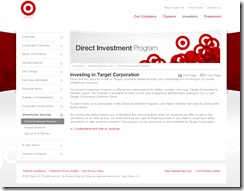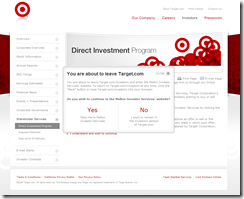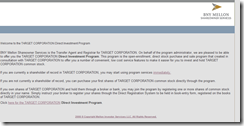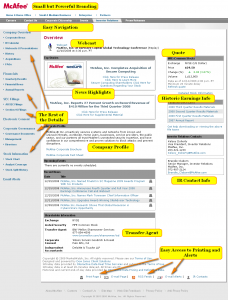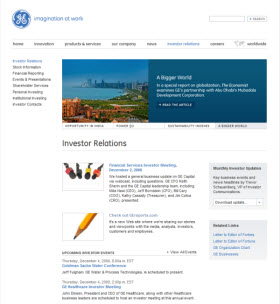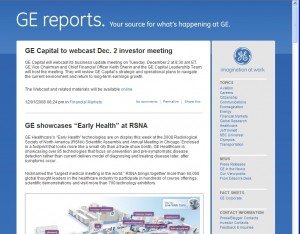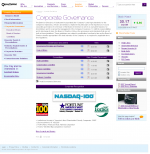As the new year begins, many departments and individuals within those departments have either looked at their performance for the previous year, or will be doing so soon. Additionally, the same should be looking forward into 2009 and developing objectives and goals, as well as the means to measure their achievement.
Not long ago, the powers that be measured the success of an Investor Relations department by the stock price. That is a little bit like measuring the quality of the physics department by the success of the marching band.
While the IR department can certainly influence the perception people have of the company and the news surrounding it, it cannot directly influence the actual events. Imagine measuring the performance of a bank stock’s IR group by its stock price performance. Not pretty.
IR Not PR
Just how to measure IR success is a bit of a mess. We have already noted how measuring success as a function of the stock price isn’t an useful measure. The other commonly implemented measurements aren’t necessarily pretty either.
There is the school of thought that advocates Public Relations style measurements. This could be something along the lines of counting the number of positive press stories and comments versus the negative. Of course, this is not tidy even for PR divisions who also need to deduce the “value” or “impact” of those items so as to not overweigh insignificant events by using just raw numbers. It is doubly difficult for Investor Relations departments who would also need a way to quantify just how “investment related” each story was in addition to how big the story was.
More importantly, there is some disagreement as to just how much IR is like Public Relations.
Consider that most public relations departments are expected to build up relationships with individual members of the media, as well as with various media outlets. These relationships can then use leverage both to spread information on behalf of the company and to get an “advanced” notice of information that may be forthcoming regarding the company.
But, most investor relations departments are actually tasked not with building relations with the media, but rather with shareholders and analysts. Because the fundamental goal of each department’s relationship building is different so too should the measurements be different.
 Measuring IR Effectiveness
Measuring IR Effectiveness
In what way can the success of an Investor Relations department objectives be measured? The answer lies within the objectives themselves.
Ironically, it seems that the overall department objectives can be fuzzy at certain companies, but the objectives for specific positions within the IR department are relatively firm. A review of recent high-level IR postings on Monster.com reveals several common themes. From those, we can extrapolate meaningful benchmarks and measurements of effectiveness.
Common IR Objectives:
- Respond to requests from Investors and Analysts for information and data.
- Develop and implement investor materials and events including presentations, releases, fact sheets, investor events, conferences, and web events.
- Develop and distribute analyst materials including data, press clippings, fact sheets, and other relevant information.
- Develop and implement competitive intelligence and information as it pertains to publicly reported financials, the press, ratings, and public comments.
- Track shareholder ownership and IR contacts with major/important shareholders.
- Track and analyze analyst’s reports, models, and projections.
- Promote the purchase and retention of the company stock.
To effectively measure the performance of an IR department then, is to measure the effectiveness of the unit at carrying out these various tasks. At first, this may appear as nebulous as before, but relatively hard data can be easily obtained by breaking down the objectives and determining what a positive outcome would look like.
For example, the first objective is to respond to requests for information. A simple tracking system that logs a timestamp for the request, as well as the response (and if necessary, the follow up) allows an at a glance look at how timely responses are. Are investor emails answered within 24 hours, or within one week, or maybe never? Are analysts requests for data responded to within hours, days, weeks? Does the response satisfy the inquiry, or are additional inquiries regarding the same information made, suggesting that the response was not fully adequate?
Investor materials can be archived and reviewed periodically to see how they not only provided the relevant education (surveys of those who received the materials can be helpful for determining this), but also how they compare to similar materials distributed by competitors and other publicly traded companies in general.
Analyst materials can be judged by observing analyst pronouncements and releases and then asking company insiders what if any information they think is flawed and what data would, if provided, counter-balance such claims. If IR indeed provided the data or materials (whether the analyst took them into account or not) this would justify positive marks. While the failure to include such data would justify the need for improvement.
Competitive intelligence could be judged similarly by noting where competitors are perceived as being more or less superior to the company and then ensuring that materials that weaken the ‘more superior’ argument are indeed within the materials while those that justify the ‘less superior’ areas are included.
The remaining three objectives are less promising ways of finding “hard” objectives, but are useful none the less. Did the IR department maintain the acceptable frequency of communications with important shareholders whether they did or did not take any actions regarding the stock? Were large changes in holdings sufficiently anticipated by the IR group? Were analyst actions anticipated or were the company and its investors blind sided?
High performance on these benchmarks, by definition, connotes high performance in the duty to promote the purchase and retention of company stock regardless of the share price.
So, as the year begins, take stock (Hah!) of your department’s goals and objectives, as well as your own and strategize for the coming year. Which of these objectives currently lacks a reportable metric? Which of them are not tracked at all? Improve on the goals and objectives and improvement within IR will follow.
